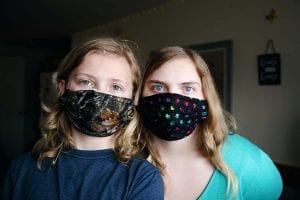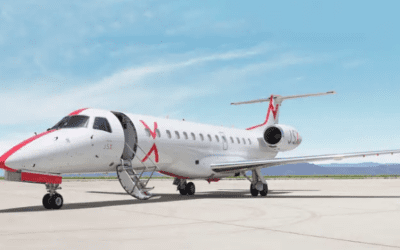Some air travelers think it’s alright to fly while contagious with COVID. They are wrong!

Anecdotal reports have been coming in since the U.S. federal government lifted its face mask mandate for air travel. It’s beginning to appear that increasingly people think it’s okay to travel while knowingly infectious with COVID-19.
In addition, it’s likely a few air travelers are contagious with COVID but are unaware of it because their cases are asymptomatic.
Air travelers who knowingly fly while contagious with COVID-19 show a lack of respect and human compassion for other travelers.
That any air traveler would have such little respect and human compassion for others that they would fly while contagious with COVID is dismaying. COVID-19 has killed more than 6.3 million people worldwide. That a person infected with COVID-19 would knowingly put the lives of anyone at serious risk, but especially those who are too young to be vaccinated, have a serious chronic disease, are old, immunosuppressed or immunocompromised, is disheartening.
Air travelers point out that the air in planes is rapidly changed. Plus, filtered makes it safer than other inside locations. That’s only half the story.
In their defense, some COVID infected air travelers may point out that the odds of catching COVID-19 on an airplane aren’t great. Backing them up is a Georgia Institute of Technology study on the level of aerosol particles on aircraft compared to other indoor spaces such as stores, homes, and offices. The research, supported by Delta Air Lines, is important because the primary transmission method of COVID-19 is by respiratory aerosols, along with respiratory droplets which are more easily contained than aerosols. The study shows that aerosol levels in planes are considerably lower than in stores, restaurants, offices, and airports.
The study’s authors correctly point out that in commercial aircraft, the air is exchanged from 10 to 30 times per hour. That means that at a minimum, the air in commercial planes is changed at least once every six minutes.
The study also points out that recirculated cabin air in commercial aircraft is filtered through HEPA filters. According to the Environmental Protection Agency, they filter 99.7 percent of airborne particles with a size of 0.3 microns (µm) and that particles “that are larger or smaller are trapped with even higher efficiency.” Therefore, HEPA filters in planes are able to efficiently filter respiratory aerosols and droplets expelled from a COVID-19 infected passenger.
The other half of the COVID infection story is your proximity to contagious passengers.
But that’s only a partial picture of potential COVID transmission in commercial aircraft. There’s another factor controlling COVID infections on airplanes — proximity to infected passengers during the flight. Despite rapid cabin air changes and filtration, passengers sitting near others contagious with COVID, particularly those infected who won’t wear a face mask, have a significant risk of infection.
With every breath, word, sneeze or cough into the airplane’s air, those infected with COVID-19 are directly spewing COVID contaminated respiratory aerosols and droplets at those sitting near them, particularly those directly across the aisle or in the next seat.
In addition to the problem for passengers seated near a passenger infected with COVID, a similar problem exists during boarding and deplaning, as well as when contagious passengers wait for and use airplane lavatories. When contagious passengers stand near other passengers and crew while they wait to be seated or leave the plane, or wait for lavatory access, their presence is a serious threat for other passengers. For example, I recently flew from Los Angeles to Philadelphia. Several times during boarding, a single passenger stood next to me for about five minutes. Also on the flight there were times when passengers were standing near each of the lavatories in economy for as long as 10 minutes, more than enough time for a contagious person to infect nearby passengers and crew members.
Contagious passengers can also infect air travelers in airports.
When infected passengers fly, the potential problem is not only on their flight, but also at the airport. There are several potential hotspots of concern for passengers and airport personnel. These are areas in which COVID-infected passengers may linger or be forced to stay in one place for some time due to circumstances.
Hot spots include passenger check-in, lounges, restaurants, airport security, gate areas, and baggage claim. In each of these areas, passengers may be stuck in lines awaiting airport services and using them while in proximity to other passengers and plane crew, or airport employees. As a result, the contagious passengers can infect others at the airports even when they have high MERV-rated air filtration systems.
Air travelers can be infected by contagious passengers who are asymptomatic and don’t know they’re infected.
For any traveler, including air travelers, there is a significant potential for infection even if passengers who knew they were infected stayed in isolation until they were no longer contagious. The problem is, as a JAMA Network Open modeling study confirmed, a significant proportion of COVID-19 transmission is asymptomatic or presymptomatic. According to the study, such transmission of COVID is potentially as high as 60 percent.
To stay as safe as possible while traveling by air or any other means, in case of contact with selfish travelers who know they’re infected and contagious or travelers who are unaware that they’re infected and contagious, I highly recommend that every traveler becomes fully vaccinated and boosted with a COVID vaccine. In addition, I highly recommend that while in airports and aboard planes, passengers wear N95 or KN95 face masks to protect themselves. Everyone in my family follows this advice.
It’s not okay to fly when you have COVID and are contagious.
To those air travelers who are willing to fly while contagious with COVID, it’s not okay to do so. To put another human being in real danger of dying for your convenience of traveling from one place to another, whenever you feel like it, is unconscionable.
After many years working in corporate America as a chemical engineer, executive and eventually CFO of a multinational manufacturer, Ned founded a tech consulting company and later restarted NSL Photography, his photography business. Before entering the corporate world, Ned worked as a Public Health Engineer for the Philadelphia Department of Public Health. As a well known corporate, travel and wildlife photographer, Ned travels the world writing about travel and photography, as well as running photography workshops, seminars and photowalks. Visit Ned’s Photography Blog and Galleries.



